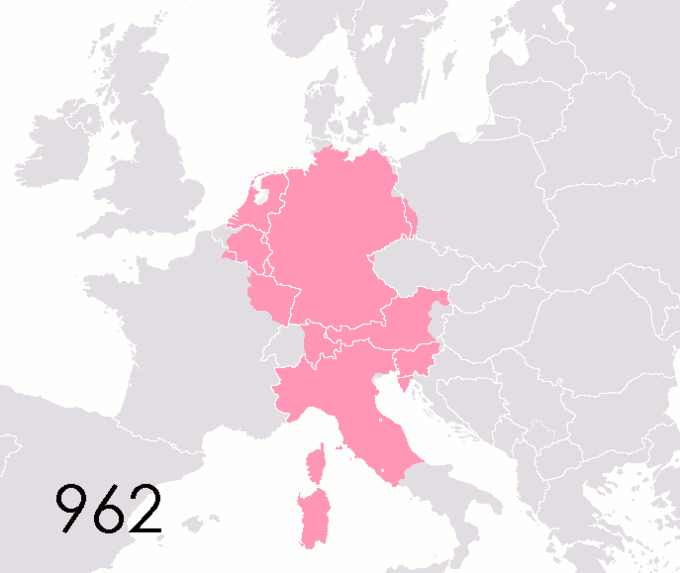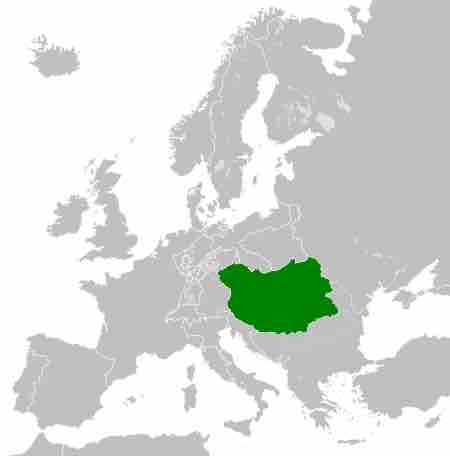The Holy Roman Empire
The Holy Roman Empire was a multi-ethnic complex of territories in central Europe that developed during the Early Middle Ages and continued until its dissolution in 1806. The term Holy Roman Empire was not used until the 13th century and the office of Holy Roman Emperor was traditionally elective, although frequently controlled by dynasties. The German prince-electors, the highest-ranking noblemen of the empire, usually elected one of their peers to be the emperor and he would later be crowned by the Pope (the tradition of papal coronations was discontinued in the 16th century). In time, the empire evolved into a decentralized, limited elective monarchy composed of hundreds of sub-units, principalities, duchies, counties, free imperial cities, and other domains. The power of the emperor was limited and while the various princes, lords, bishops and cities of the empire were vassals who owed the emperor their allegiance, they also possessed an extent of privileges that gave them de facto independence within their territories.

The Holy Roman Empire from 962 to 1806
The only princely member state of the Holy Roman Empire that has preserved its status as a monarchy until today is the Principality of Liechtenstein. The only Free Imperial Cities still being states within Germany are Hamburg and Bremen. All other historic member states were either dissolved or are republican successor states to their princely predecessor states.
The Habsburg Dynasty and the Holy Roman Empire
The Habsburgs held the title of Holy Roman Emperor between 1438 and 1740, and again from 1745 to 1806. Regardless of the one family holding onto the title for such a long period of time, the Holy Roman Emperor was elected and the position never became hereditary. This contrasted with the power that the Habsburgs held over territories under their rule, which did not overlap with the Holy Roman Empire. From the 16th century until the formal establishment of the Austrian Empire in 1804, those lands were unofficially called the Habsburg or Austrian Monarchy. They changed over the centuries, but the core always consisted of the Hereditary Lands (most of the modern states of Austria and Slovenia, as well as territories in northeastern Italy and southwestern Germany); the Lands of the Bohemian Crown; and the Kingdom of Hungary. Many other lands were, at times, also under the Habsburg rule.
The various Habsburg possessions never really formed a single country—each province was governed according to its own particular customs. Until the mid 17th century, not all of the provinces were even necessarily ruled by the same person—junior members of the family often ruled portions of the Hereditary Lands as private apanages. Serious attempts at centralization began under Maria Theresa and especially her son Joseph II in the mid to late 18th century, but many of these were abandoned following large scale resistance to Joseph's more radical reform attempts, although a more cautious policy of centralization continued during the later period.
The Holy Roman Empire was also not a centralized state but its fragmentation was much more dramatic than that of the Habsburg Monarchy. It was divided into dozens—eventually hundreds—of individual entities governed by kings, dukes, counts, bishops, abbots and other rulers, collectively known as princes. There were also some areas ruled directly by the Emperor. At no time could the Emperor simply issue decrees and govern autonomously over the Empire. His power was severely restricted by the various local leaders. The Emperors were unable to gain much control over the lands that they formally owned. Instead, to secure their own position from the threat of being deposed, they were forced to grant more and more autonomy to local rulers.
The division between the positions of the Holy Roman Emperor and the Emperor of the Austrian Monarchy is best illustrated by the circumstances around the War of the Austrian Succession. The war began under the pretext that Maria Theresa was ineligible to succeed to the Habsburg thrones of her father, Charles VI, because the existing law precluded royal inheritance by a woman. At the end, Maria Theresa was recognized as the head of the Austrian Monarchy but, since the title of the Holy Roman Emperor could not belong to a woman, it was her husband, Francis I, who was eventually granted the title. Correspondingly, when Francis died in 1765, Maria Theresa continued to rule the Habsburg lands but her son, Joseph II, secured the title of the Holy Roman Emperor. However, he gained the rule over the hereditary territories of the Habsburgs only after his mother's death fifteen years later.
The End of the Holy Roman Empire and the Austrian Empire
At the turn of the nineteenth century, the Holy Roman Empire underwent significant changes. In 1803, the Imperial Recess was declared, which reduced the number of ecclesiastical states from 81 to only 3 and the free imperial cities from 51 to 6. In 1804, the Holy Roman Emperor Francis II, who was also ruler of the lands of the Habsburg Monarchy, founded the Empire of Austria, in which all his lands were included. In doing so he created a formal overarching structure for the Habsburg Monarchy as he foresaw either the end of the Holy Roman Empire or the eventual accession as Holy Roman Emperor of Napoleon, who had earlier that year adopted the title of an Emperor of the French. In 1805, the leaders of some imperial territories proclaimed their independence and signed a treaty with France, becoming French allies. Eventually, Francis II agreed to the humiliating Treaty of Pressburg (1805), which in practice meant the dissolution of the long-lived Holy Roman Empire and a reorganization under a Napoleonic imprint of the German territories lost in the process into a precursor state of what became modern Germany. In 1806, the Confederation of the Rhine was established, comprising 16 sovereigns and countries. This confederation, under French influence, put an end to the Holy Roman Empire.

The Austrian Empire in 1812
The Austrian Empire was a multinational empire and one of Europe's great powers. Geographically it was the second largest country in Europe after the Russian Empire. It was also the third most populous after Russia and France, as well as the largest and strongest country in the German Confederation.